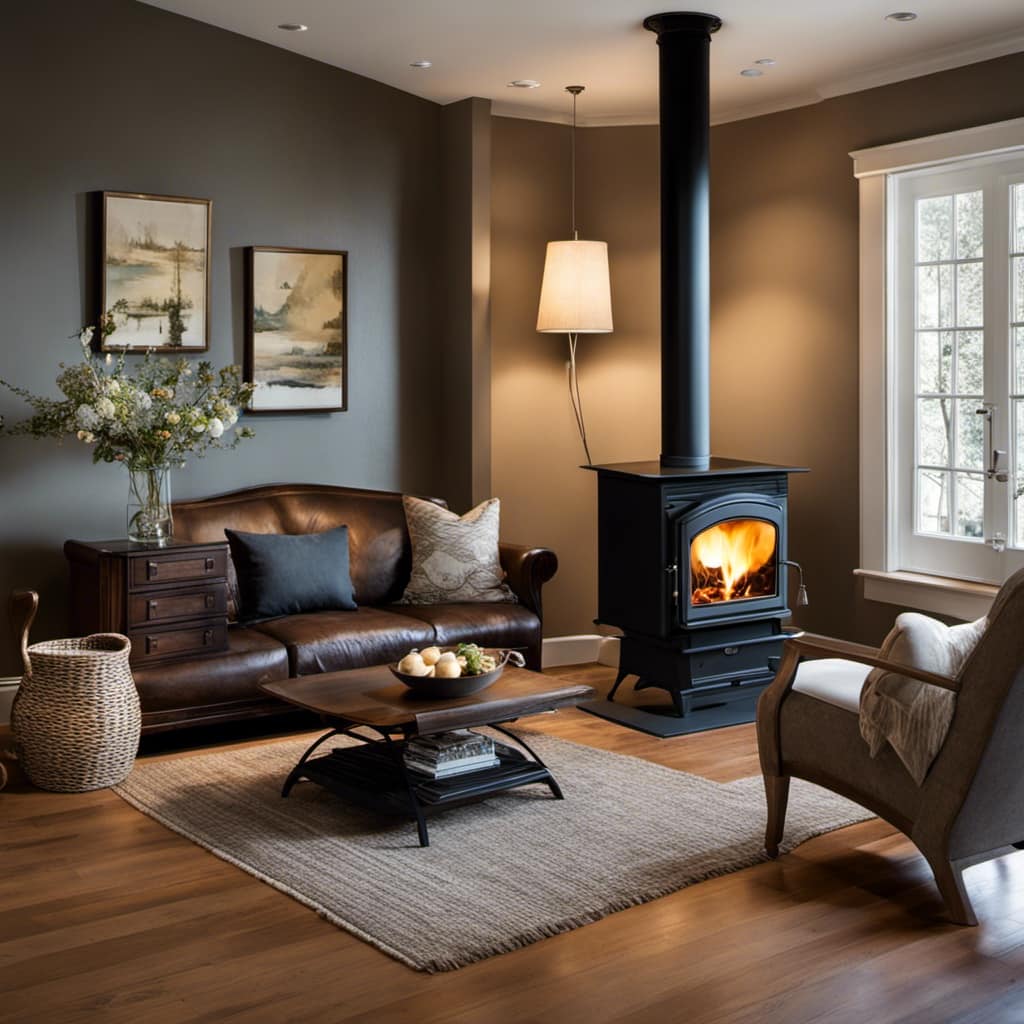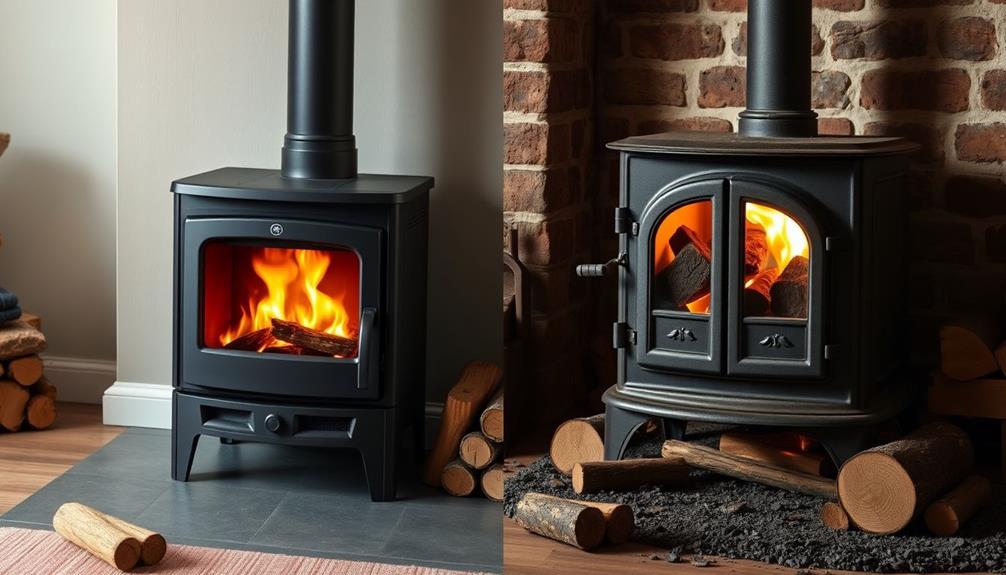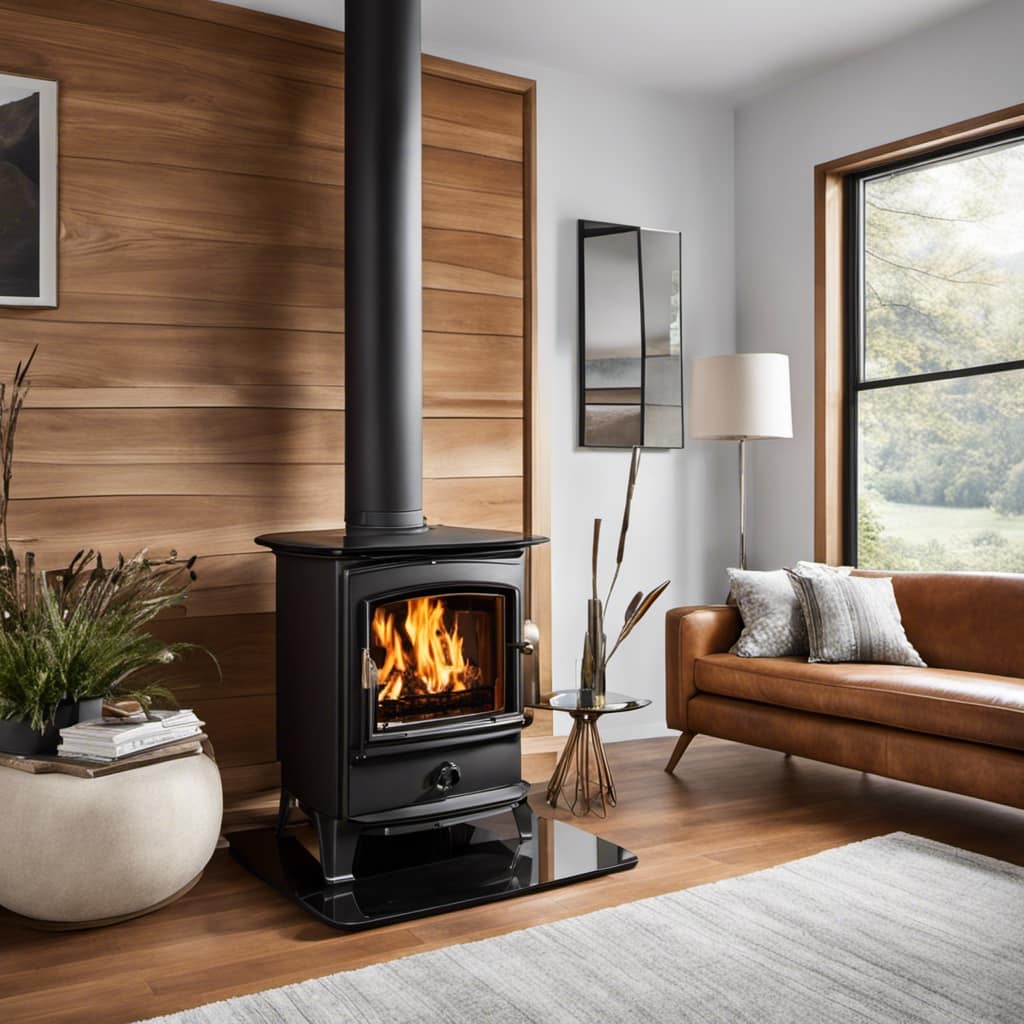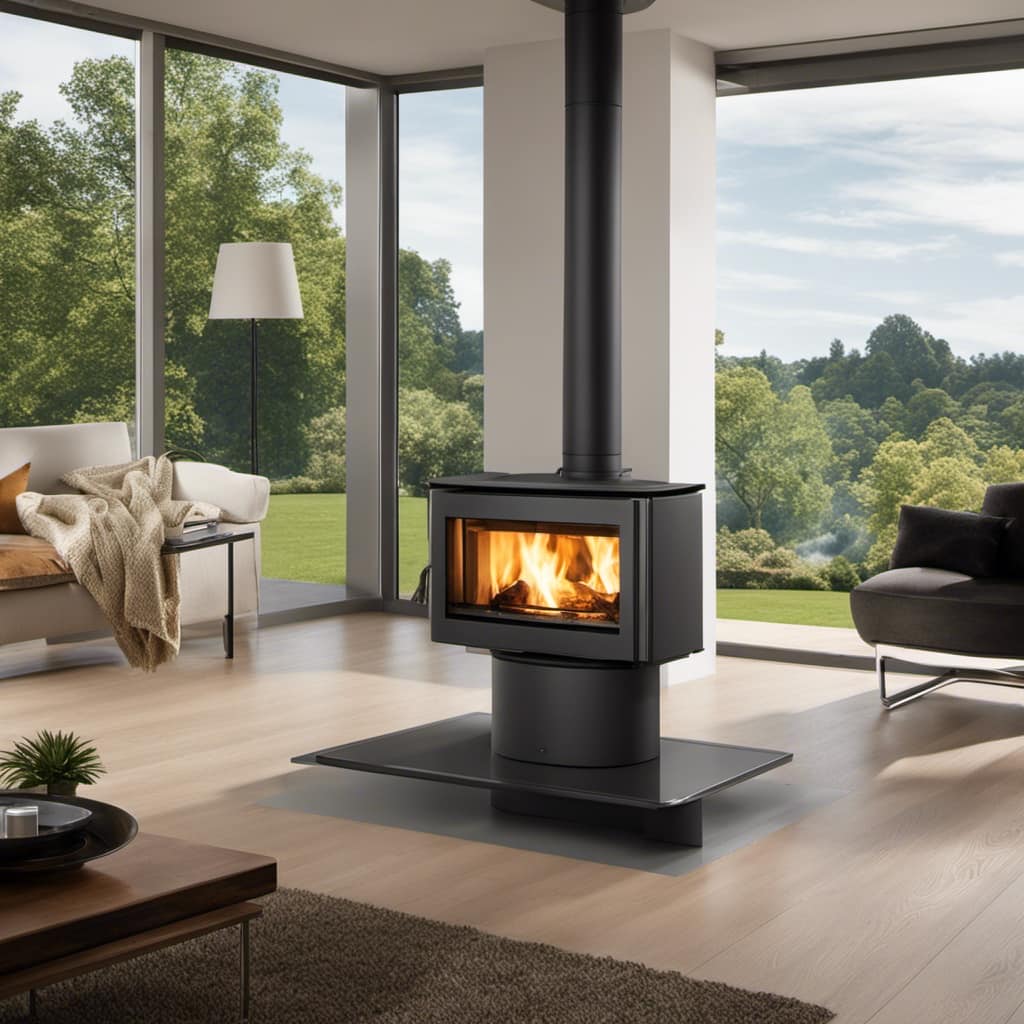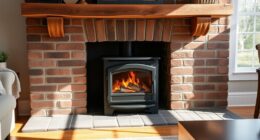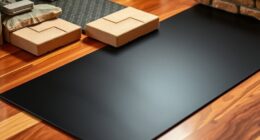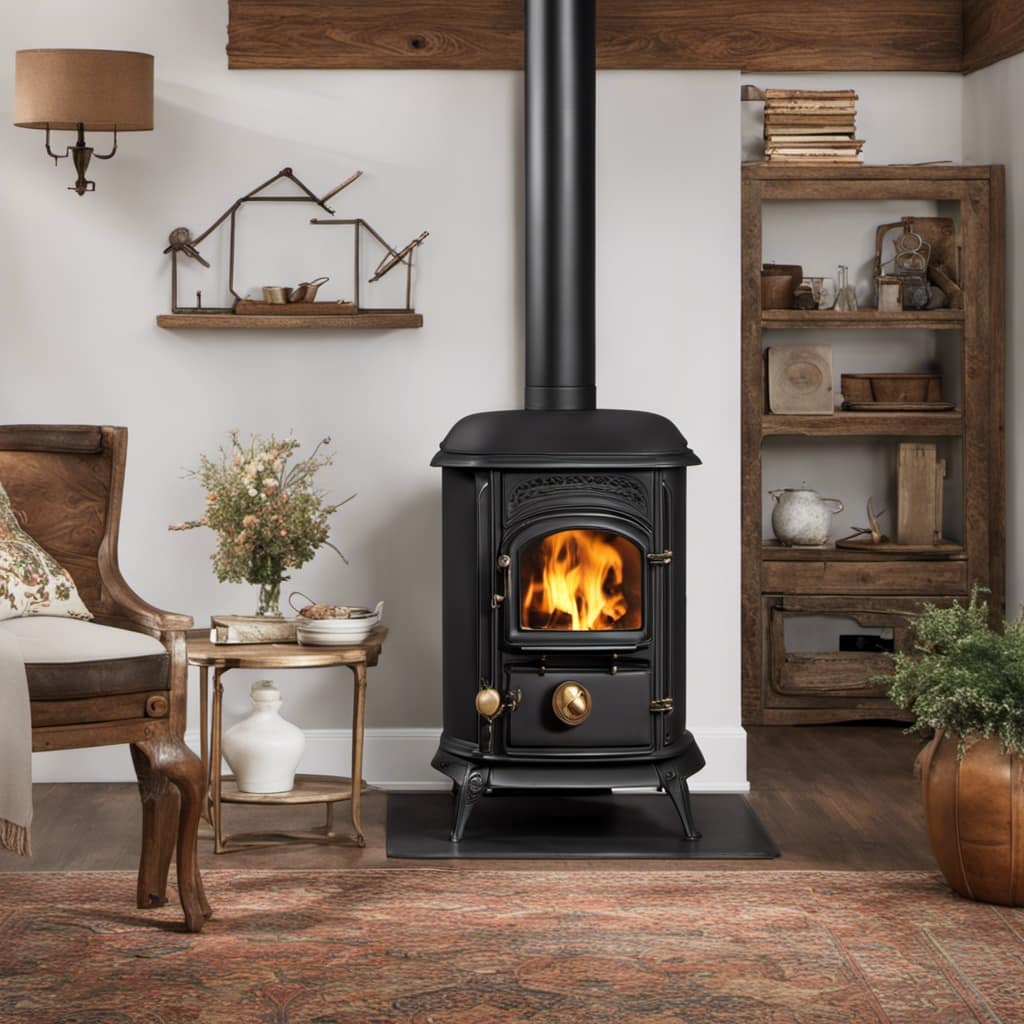
As a passionate advocate for wood stoves, I understand the annoyance of walls absorbing too much heat. However, I have found effective ways to prevent your wood stove from overheating your walls.
In this article, I’ll share my expert knowledge on understanding heat transfer, insulating your wall, proper placement, and using heat shields.
Plus, I’ll provide essential maintenance tips to prevent overheating. Say goodbye to wall-warming worries and hello to a cozy, safe wood stove experience.
Key Takeaways
- Choose fire-resistant materials like mineral wool, ceramic fiber, or rock wool for wall insulation.
- Maintain a minimum 36-inch clearance between the wood stove and combustible materials.
- Place a heat shield behind the wood stove to protect the wall from excessive heat.
- Regularly clean and inspect the chimney to remove blockages and maintain efficiency.
Understanding Heat Transfer in Wood Stoves
I’m currently learning about how heat is transferred in wood stoves.
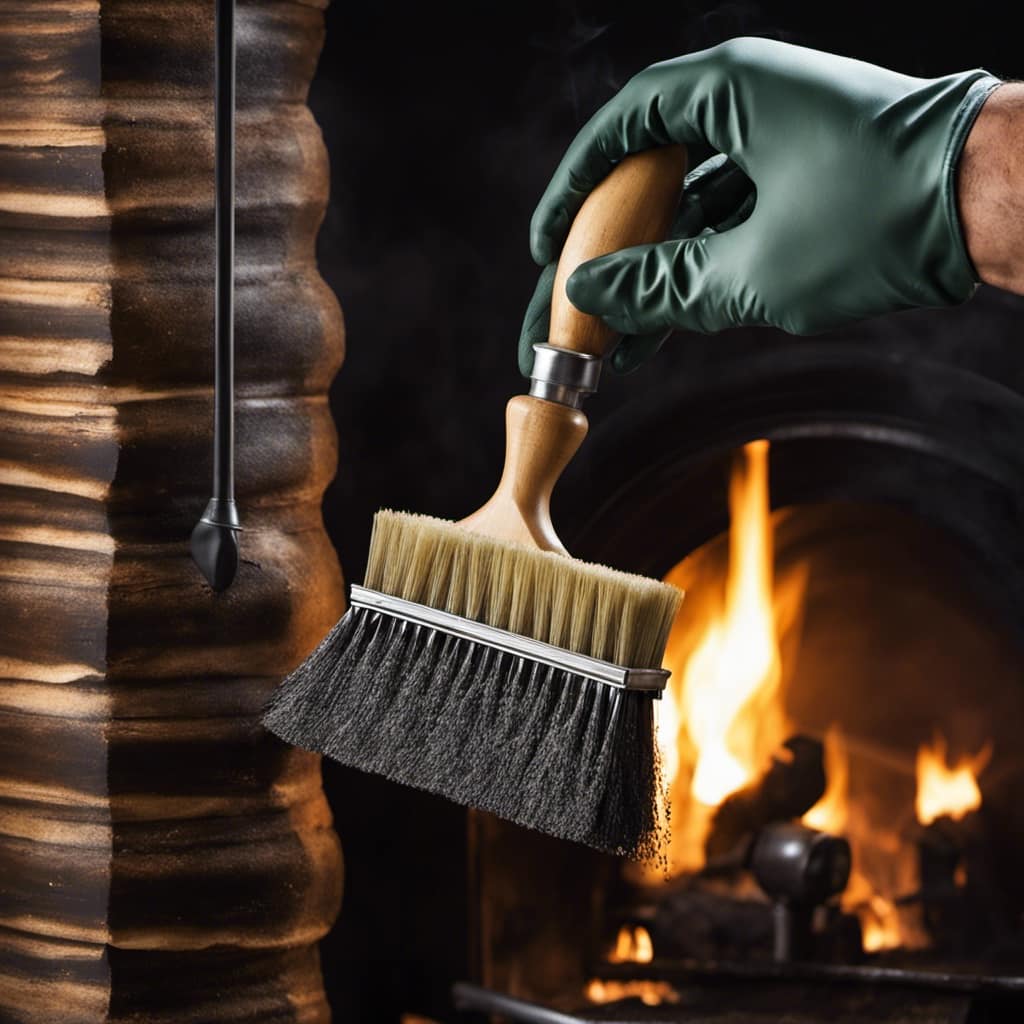
One key aspect to understand is the thermal conductivity in wood stoves. Thermal conductivity refers to the ability of a material to conduct heat.
In wood stoves, the materials used for construction play a crucial role in determining how efficiently heat is transferred. For example, materials with high thermal conductivity, such as cast iron, are excellent at conducting heat and distributing it evenly throughout the stove. On the other hand, materials with low thermal conductivity, like fire bricks, are used to retain heat and protect the surrounding areas from excessive heat transfer.
Understanding the heat distribution in wood stoves is essential for optimizing their performance and preventing any potential damage.
Now, let’s explore how insulating your wall can provide maximum heat protection.
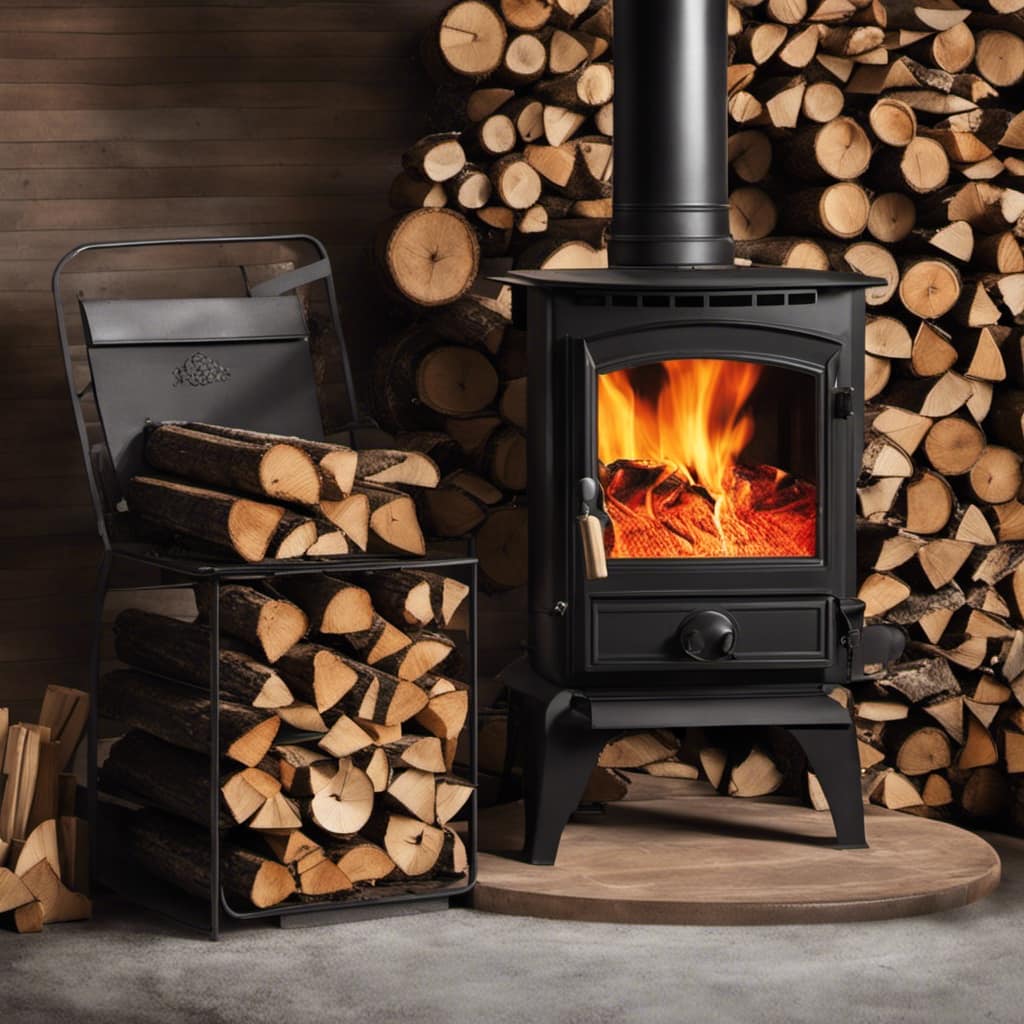
Insulating Your Wall for Maximum Heat Protection
To achieve maximum heat protection, it’s crucial to prioritize safety and functionality when choosing fire resistant materials for wall insulation. Opt for materials such as mineral wool, ceramic fiber, or rock wool, as they have excellent fire resistance properties. These materials can withstand high temperatures without compromising their structural integrity, providing a protective barrier between the wood stove and the wall.
Another important factor in wood stove heat protection is proper ventilation. Ensuring adequate airflow around the stove helps dissipate heat and prevents the buildup of hot air, reducing the risk of overheating the surrounding walls.
By selecting fire resistant materials and ensuring proper ventilation, you can effectively protect your walls from the intense heat generated by a wood stove.
Now, let’s move on to discussing the proper placement and clearance for your wood stove.

Proper Placement and Clearance for Your Wood Stove
I’ll ensure proper clearance by keeping the wood stove at least 36 inches away from combustible materials. This is a crucial fire safety precaution that shouldn’t be overlooked.
In addition to maintaining the proper clearance, it’s also important to ensure proper ventilation for the wood stove. Adequate airflow is necessary for efficient combustion and to minimize the risk of carbon monoxide buildup.
To achieve proper ventilation, make sure that the wood stove is installed with the appropriate chimney or venting system. It should be properly sized and installed according to the manufacturer’s specifications.
Regular maintenance and inspection of the chimney and venting system is also essential to ensure that there are no blockages or obstructions that could impede airflow.
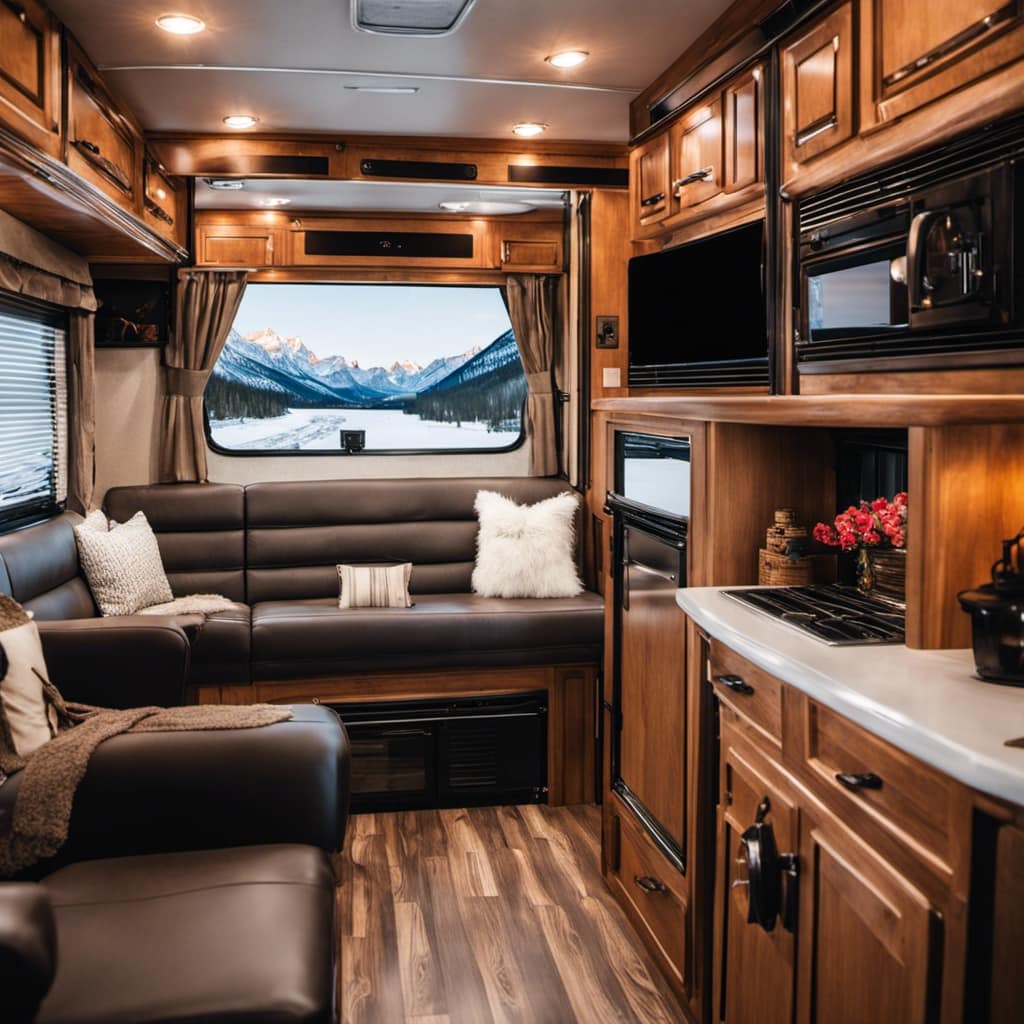
Using Heat Shields to Protect Your Wall
By placing a heat shield behind my wood stove and using a coordinating conjunction, I can effectively protect my wall from excessive heat. One effective method is using reflective materials for the heat shield.
Reflective materials, such as aluminum or stainless steel, can help to redirect the heat away from the wall, reducing the risk of heat damage.
Another important consideration is installing a heat resistant barrier between the heat shield and the wall. This barrier acts as an additional layer of protection, ensuring that any residual heat is further minimized.
It’s crucial to choose a heat resistant barrier that can withstand high temperatures and is specifically designed for this purpose.
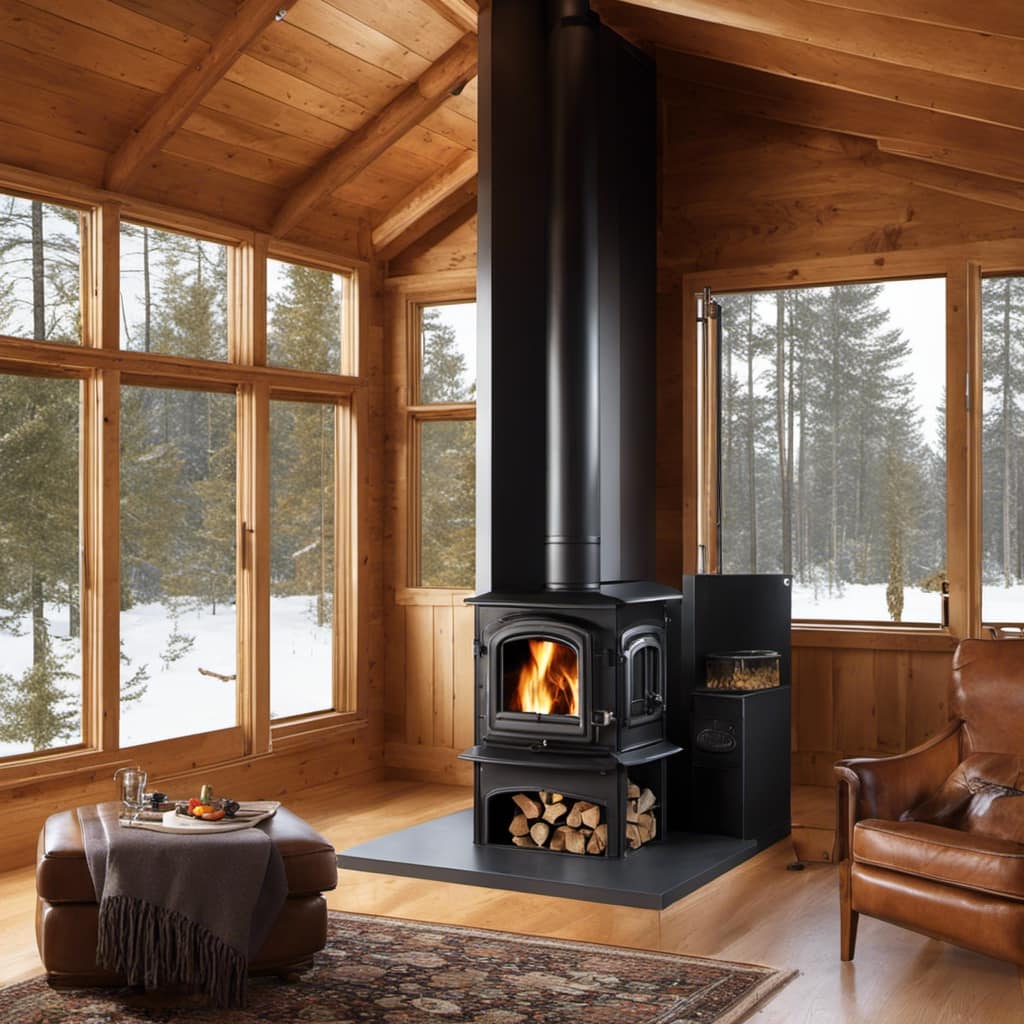
Maintenance Tips to Prevent Overheating of Your Wood Stove
One simple tip to prevent overheating of my wood stove is to regularly clean and inspect the chimney for any blockages. Proper cleaning techniques are essential to maintain the efficiency and safety of a wood stove. Over time, creosote and debris can accumulate in the chimney, hindering the ventilation and leading to potential overheating issues. By removing these blockages, I ensure that the hot air generated by the wood stove can escape freely, preventing the stove from overheating and potentially causing damage.
Additionally, implementing ventilation solutions such as installing a damper or a chimney cap can further enhance the airflow and prevent the stove from overheating. Regular cleaning and inspection, combined with proper ventilation solutions, are crucial in maintaining the optimal performance and safety of my wood stove.
Frequently Asked Questions
How Do I Choose the Right Size Wood Stove for My Wall?
To choose the right size wood stove for your wall, consider the square footage of the room and the stove’s heat output. Safety measures include maintaining proper clearance from combustible materials and installing a heat shield.
What Are the Signs That My Wall Is Getting Too Hot From the Wood Stove?
To prevent potential wall damage and ensure a safe distance, it’s crucial to address the signs of excessive heat from a wood stove. Monitoring for discoloration, blistering paint, or warping can indicate overheating and prompt necessary adjustments.

Can I Use Any Type of Insulation for Maximum Heat Protection?
I can use various types of insulation materials for maximum heat protection with my wood stove. These materials are specifically designed to withstand high temperatures and prevent the wall from getting hot.
Is It Safe to Install a Wood Stove in a Small Room With Limited Ventilation?
Proper ventilation is crucial when installing a wood stove in a small room. To maintain a safe temperature, ensure the stove is placed at a safe distance from walls and use heat-resistant materials for added protection.
Can I Use a Regular Wall-Mounted Heat Shield for My Wood Stove, or Do I Need a Specific Type?
Using a regular wall-mounted heat shield may not be sufficient for wood stove heat distribution. It is recommended to use a specific type of heat shield designed for wood stoves. Alternative heat shields can also be considered.
Conclusion
In conclusion, by understanding heat transfer, insulating your wall, ensuring proper placement and clearance, and using heat shields, you can effectively protect your wall from the excessive heat generated by your wood stove.
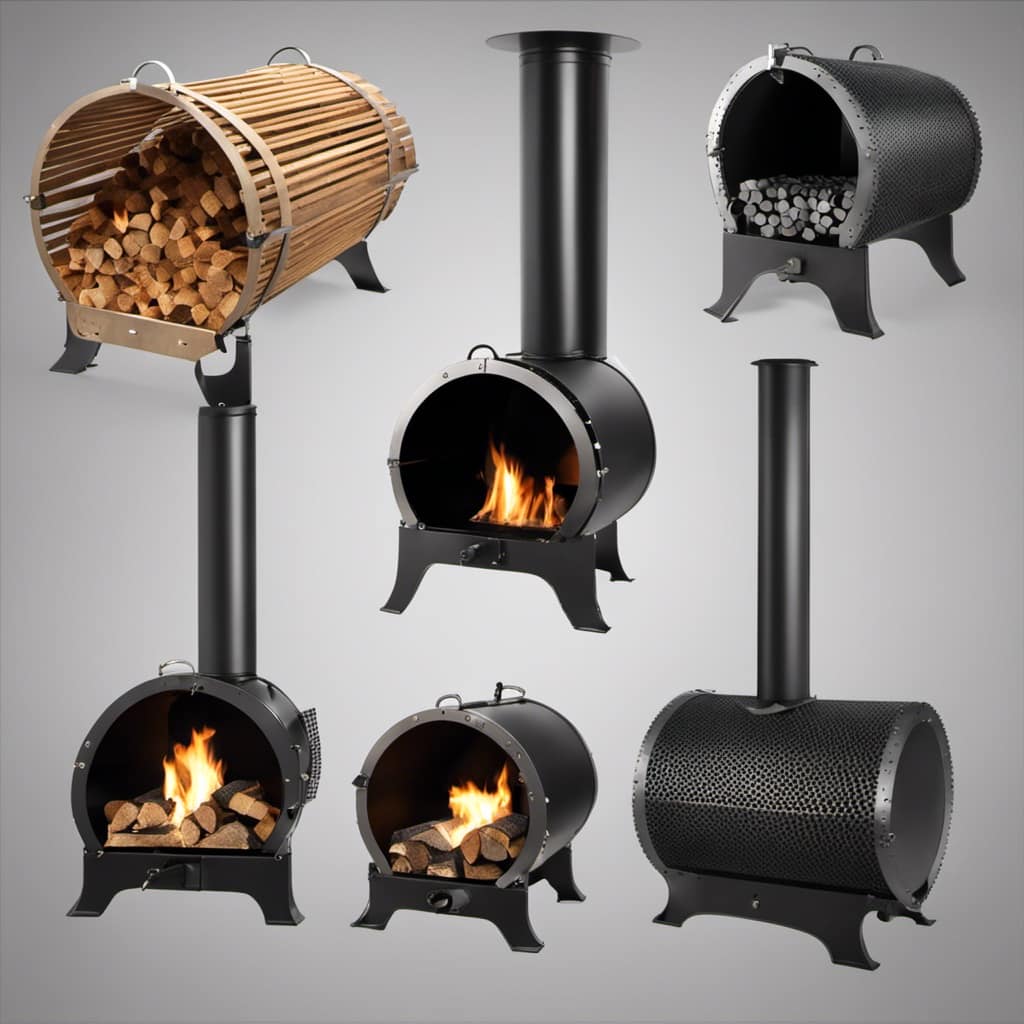
It’s interesting to note that according to a study, properly insulating your wall can reduce heat transfer by up to 70%, providing significant heat protection for your home.
By following these tips and regularly maintaining your wood stove, you can enjoy the warmth without worrying about overheating your wall.
Growing up surrounded by the vast beauty of nature, Sierra was always drawn to the call of the wild. While others sought the comfort of the familiar, she ventured out, embracing the unpredictable and finding stories in the heartbeat of nature.
At the epicenter of every remarkable venture lies a dynamic team—a fusion of diverse talents, visions, and passions. The essence of Best Small Wood Stoves is crafted and refined by such a trio: Sierra, Logan, and Terra. Their collective expertise has transformed the platform into a leading authority on small wood stoves, radiating warmth and knowledge in equal measure.


